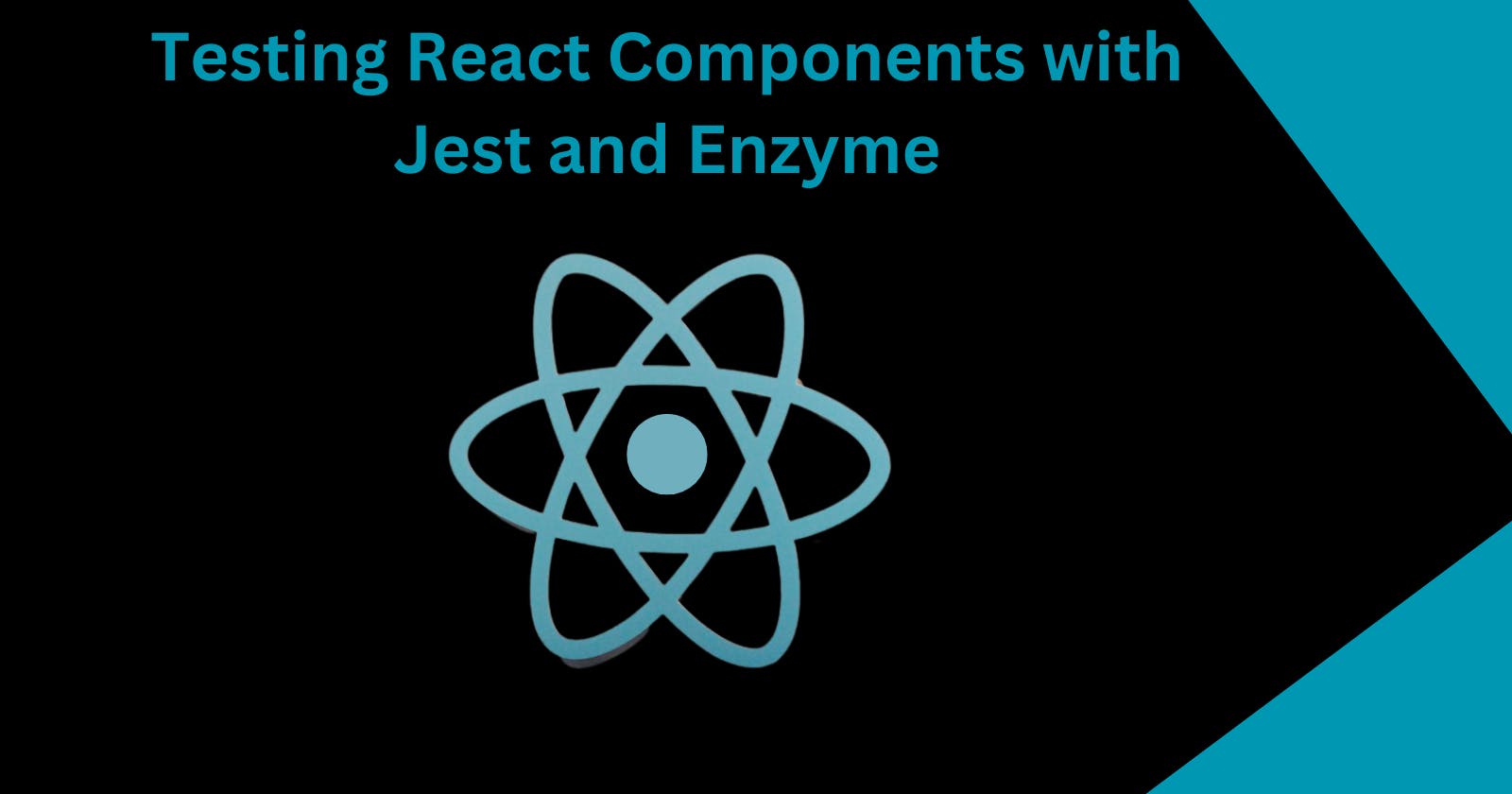Unit testing is an essential practice in software development that allows developers to test individual components of their code to ensure they function as intended. In the context of React, unit testing plays a crucial role in verifying the behavior of React components. React is a popular JavaScript library for building user interfaces, and testing React components ensures their reliability, maintainability, and overall code quality. In this comprehensive guide, we will explore how to perform unit testing on React components using two powerful tools: Jest and Enzyme.
- Understanding Unit Testing:
1.1 What is Unit Testing? Unit testing is a software testing approach that focuses on testing individual units of code, such as functions, classes, or components. The goal is to verify that each unit behaves correctly and independently. By isolating units and testing them in isolation, developers can detect and fix issues early in the development cycle.
1.2 Why Unit Test React Components? Unit testing React components allows developers to ensure that each component behaves as expected, produces the correct output, and responds correctly to user interactions and state changes. It helps catch regressions and provides a safety net for refactoring, as well as facilitating collaboration among team members.
- Overview of Jest:
2.1 What is Jest? Jest is a powerful JavaScript testing framework developed by Facebook. It offers a comprehensive set of features for testing JavaScript code, including React components. Jest provides a simple and intuitive API, built-in code coverage reporting, parallel test execution, and a rich ecosystem of plugins and extensions.
2.2 Setting Up Jest: We will cover the step-by-step process of setting up Jest for testing React components. This includes configuring Jest with Babel to handle JSX and ES6 syntax, installing necessary dependencies, and creating a basic Jest configuration file.
- Introduction to Enzyme:
3.1 What is Enzyme?
Enzyme is a JavaScript testing utility for React developed by Airbnb. It provides a set of utilities to traverse, manipulate, and assert on React components' output. Enzyme's API offers different rendering methods, allowing us to test components in various scenarios and easily simulate user interactions.
3.2 Installing and Configuring Enzyme:
We will explain how to install Enzyme and its dependencies, configure it to work with Jest, and set up Enzyme's Adapter to support different React versions. This section also covers the different rendering methods provided by Enzyme and how to choose the appropriate one for your testing needs.
- Writing Unit Tests:
4.1 Anatomy of a Unit Test: We will explore the structure of a typical unit test using Jest and Enzyme. This section covers writing test cases, using assertions to verify expected behavior, and organizing tests into suites. We will also discuss best practices for writing clean and maintainable unit tests.
4.2 Testing React Components: We will dive into testing React components with Enzyme. This includes rendering components, finding elements using Enzyme's selectors, simulating user interactions, and verifying component output. We will also cover snapshot testing, a powerful technique to capture and compare component renderings.
4.3 Testing Component Behavior: Testing component behavior involves simulating user interactions, such as clicking buttons, entering text, and submitting forms. We will demonstrate how to use Enzyme's API to simulate events and assert on the resulting component state and behavior.
- Advanced Testing Techniques:
5.1 Mocking Dependencies: When testing React components, it is often necessary to mock external dependencies, such as API calls or other modules. We will explore different techniques for mocking dependencies using Jest and Enzyme, ensuring that tests are isolated and focus solely on the component being tested.
5.2 Testing Redux-Connected Components: React applications often use Redux for state management. Testing components connected to Redux adds an additional layer of complexity. In this section, we will cover techniques for testing Redux-connected components using Jest and Enzyme. This includes mocking the Redux store, dispatching actions, and asserting on the component's props and behavior.
5.3 Testing Asynchronous Code: React components often involve asynchronous operations, such as fetching data from an API. Testing asynchronous code requires special consideration. We will explore techniques for testing asynchronous operations in React components, including mocking API calls, using async/await, and utilizing Jest's built-in functions like done() or resolves().
Code Coverage and Continuous Integration: Code coverage is a critical aspect of testing, ensuring that your tests cover a significant portion of your codebase. We will discuss how to measure code coverage using Jest and Enzyme, generate coverage reports, and integrate testing into a continuous integration pipeline using tools like Jenkins or Travis CI.
Best Practices and Tips:
7.1 Test-Driven Development (TDD): We will discuss the concept of Test-Driven Development (TDD) and its benefits. TDD encourages writing tests before implementing functionality and can lead to more reliable and maintainable code.
7.2 Testing React Hooks: React hooks introduced a new way of managing state and side effects in functional components. We will cover strategies for testing React hooks using Jest and Enzyme, including testing custom hooks and simulating hook dependencies.
7.3 Test Organization and Maintainability: Maintaining a well-organized and structured test suite is crucial for long-term maintainability. We will discuss strategies for organizing tests, using test suites and naming conventions, and avoiding code duplication in test cases.
7.4 Test Performance and Optimization: As your test suite grows, test performance becomes important. We will explore techniques for optimizing test performance, such as running tests in parallel, using test-specific configurations, and avoiding unnecessary setup and teardown.
- Conclusion: Unit testing React components with Jest and Enzyme is a valuable practice for ensuring the quality and reliability of your codebase. By following the guidelines and techniques outlined in this comprehensive guide, you will be equipped to write effective unit tests, simulate user interactions, and confidently validate the behavior of your React components. Embracing unit testing will lead to improved code maintainability, bug detection, and overall developer productivity.

